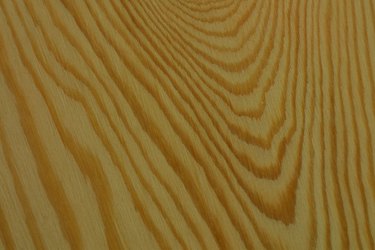 Use the correct nail based on the job. Image Credit: Photos.com/Photos.com/Getty Images
Use the correct nail based on the job. Image Credit: Photos.com/Photos.com/Getty Images
There are many uses for plywood, from roofing to subfloors and everything in between. Because of plywood's versatility, different types of nails are recommended for specific jobs. The lengths of nails are dependent upon the medium into which the nail is driven, and can be adapted for a variety of projects, but the project you are working on will determine which nail is best.
Video of the Day
Roofing
Plywood roofing panels that attach to the roof are held in place with ring-shank exterior-grade nails. The ring shanks on the shaft act like little barbs to grip the wood tightly when driven so that they resist loosening up over their lifetime. Since these are exposed to outside conditions, they must be coated or made of galvanized or other kinds of rust-resistant metals. Shingles are then attached to the plywood using galvanized roofing nails.
Framing
Framing nails are used for plywood assembly both interior or exterior. They are referred to as sinker nails, common nails and box nails. Sinker nails have a waffled head, which makes driving them easier, and a coating over the shank to keep them solidly in place once driven. These are the best nails to use for framing in any situation. Common nails are very similar to sinkers but they lack the coating and the waffled head. They are inexpensive but after several years they have a tendency to loosen up and begin to pull out as the plywood shrinks. Box nails resemble common nails but are thinner to keep the wood from splitting when driven. They are best used when nailing solid wood boards and not plywood.
Subfloors
Use a 3-16 inch-head ring shank nail to hold plywood underlayment for a subfloor in place. The nail tip must not exceed the width of the floor joist it is being driven into. House floor joists are generally about 8 to 10 inches wide, so nail length is not an issue. However, garden shed or other outbuildings may only use two-by-fours as joists, and in that case, a 4-inch nail would be the maximum length. The nail must be countersunk to prevent the nail head from protruding and leaving an uneven surface. Use coated nails, like chromate or hot-dip zinc galvanized nails. For the longest lasting performance, use a stainless steel or hardened aluminum nail, but never use a cement-coated or rosin-coated nail because they may leave stains that could come up through the floor.
Paneling
Plywood paneling is anchored into wooden wall studs using colored paneling nails, also called finishing nails or brads, driven inside the darker seams of the paneling. Generally the nails are no longer than 1 inch, but if they will be going through drywall, increase the nail length to 1 5/8 inches. Pound the nails in with a hammer and then tap them in flush with a nail set. The flush set of the appropriately colored nail head will blend in with the darker seam color of the panel.



























